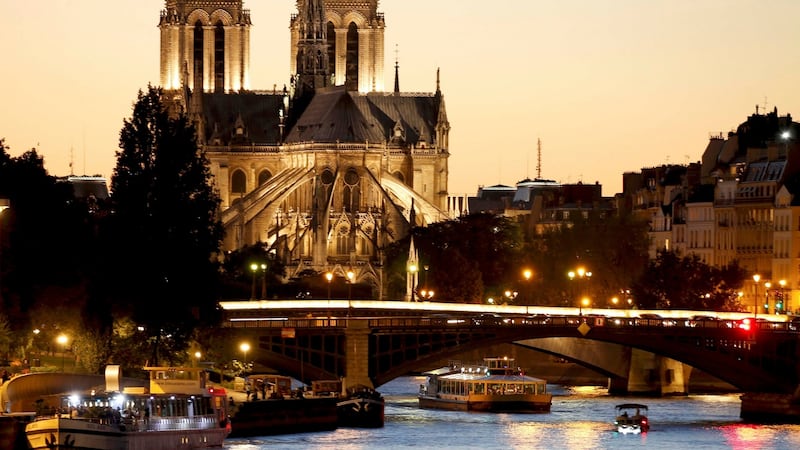About 200 years before Christ, the fishermen and boatmen of the Parisi tribe settled on a ship-shaped island in the Seine, which they gave the Celtic name Lutetia, meaning “boatyard on a river”. Lutetia was conquered by the Romans in 52 BC, and would become the seat of French power until the 14th century.
In 2015, French president François Hollande asked the architect Dominique Perrault and Philippe Bélaval, president of the centre for national monuments, to think about how the Île de la Cité could be brought back to life.
Perrault and Bélaval say they want to turn the island into “a real neighbourhood,” inhabited by students, artists and academics. Some 14 million tourists visit the Île de la Cité annually, but Parisians rarely go there. Two-thirds of its 1,000 apartments are rented out through Airbnb. It boasts not a single school or polling station.

Despite the beauty of Notre Dame Cathedral, the Sainte Chapelle and the Conciergerie, the island is a daunting place. Baron Haussmann razed most of its medieval buildings and replaced them with foreboding monuments: the Prefecture of Police, the Hôtel-Dieu hospital, the Palais de Justice.
Paris ghosts
The Île de la Cité is a place peopled by ghosts, real and fictional. The 12th-century philosopher Abelard fell in love with Heloise in the cloisters of Notre Dame. Nearly 2,600 prisoners, including Marie-Antoinette, Danton and Robespierre, went from the Conciergerie to their death by guillotine.
Victor Hugo called the Île de la Cité the "cradle of Paris" and gave it the hunchback Quasimodo. The Belgian novelist Georges Simenon placed his inspector Maigret on the quai des Orfèvres.
Hollande asked Perrault and Bélaval to “restore the island to its rightful place in the history of Paris and in the cultural and social life of the capital”. On Tuesday night, the president inaugurated an exhibition of 35 three-dimensional maquettes illustrating their ideas for the island’s future. They can be seen in the Gothic hall of the Conciergerie until April 17th.
The most striking innovation is a glass esplanade in front of Notre Dame, through which visitors would view the crypt and foundations of the medieval cathedral. “Instead of one cathedral, I’ll give you two,” said Perrault, “thanks to its reflection in the transparent slab.”
Stairs would take pedestrians down to a wharf on the south side of the island, where boats could moor. A wooded path would lead visitors along the edge of the island and across the Seine to the Louvre.
Perrault would make a large, pedestrian square, comparable to Venice’s Piazza San Marco, between the Palais de Justice and the Hôtel-Dieu, like a spine down the centre of the island.
The architect titles his project “Island of stone, island of glass”, and says he wants to create “a metamorphosis, without altering its heritage”.
Perrault would put glass domes over much of the island’s open spaces, including the vast courtyard of the police prefecture. He would redesign the decrepit old flower market to resemble a small-scale Crystal Palace, similar to the structure in London.
The island’s institutions are presently entered through long queues outside metal detectors. Perrault apparently believes the terrorist threat will subside. He wants to open up and link the public buildings, in part by transforming underground parking lots to pedestrian passages.
Architectural projects
Hollande's predecessors immortalised themselves in grand architectural projects. Georges Pompidou had the Pompidou Centre; François Mitterrand the Bastille Opera, the great arch at La Défense, and the pyramid at the Louvre. Jacques Chirac conceived of the quai Branly museum for "first arts". Nicolas Sarkozy's dream of a museum of French history did not materialise.
If Hollande wanted a monument to himself, he left it too late, unveiling his project with less than three months left in office. Mitterrand negotiated with his successor, Chirac, to ensure his projects would be completed. Hollande shows no sign of intending to do so.
Paris will learn on September 24th whether its bid for the 2024 Olympics has been successful. The city would also like to host the 2025 World’s Fair. Either or both would give Hollande’s plan a boost.
In the meantime, as Libération newspaper concluded: "The 2040 plan for the Île de la Cité remains as uncertain as the political future of the country."















